Updated March 17, 2021
I never expected to use “Dubai” and “cheap” in the same sentence. I figured exploring Dubai’s biggest, tallest, richest (and numerous other superlatives) required deep pockets. Not true. There are layers to Dubai that are interesting to uncover, and it’s possible to do so on a shoestring budget. These 10 tips for exploring Dubai on the cheap offer ideas on how to do so.
They’re focussed on a vibrant part of the old city near the mouth of Dubai Creek. They’ll help you peel back some of the rich layers of Emirati history. You’ll interact with immigrant workers from around the globe. You’ll stumble across eateries spanning many cultures, and enjoy meals at a fraction of the price you’ll pay in the neighbourhoods of ‘New Dubai.’
Don’t get me wrong. By all means, check out the ski hill in the Mall of the Emirates. Take The Palm Monorail out to Atlantis. Splurge on high tea at Burj Al Arab, the most luxurious hotel in the world. Sign up for a desert safari. But, if you’re like me, once you’ve had your fill, the ‘other Dubai’ will draw you time and time again out to the older neighbourhoods of Bur Dubai and Deira.
Table of Contents
- 10 Tips for exploring Dubai on the cheap
- 1. Use public transportation
- 2. Head to the beach
- 3. Visit Dubai Museum, one of the best deals in town
- 4. Get lost in Bastakiya
- 5. Take a self-guided walking tour
- 6. Criss-cross Dubai Creek on an abra
- 7. Stroll towards the Dhow Wharfage
- 8. Get lost in the Deira Souks
- 9. Eat your way around Dubai on the cheap
- 10. Take the ferry from Dubai Creek to Dubai Marina
- Where to stay in Dubai on a budget
- More resources
10 Tips for exploring Dubai on the cheap
1. Use public transportation
Public transportation makes it easy to navigate sprawling Dubai. It’s affordable and green. You’ll learn a lot about the city, and the diversity of its residents. Ride the Dubai Metro, a driverless automated railway system. Wait for a bus in an air-conditioned shelter. Like other places in the world, bus stops are great places to strike up conversations.
Pick up a rechargeable Nol card (‘Nol’ means ‘fare’ in Arabic). You’ll be able to use it on the metro, trams, buses, and water buses. Parking costs can also be covered.
2. Head to the beach
Jumeirah Beach is the closest many people get to the Burj Al Arab. Unlike the ‘Burj,’ Jumeirah Beach is free and accessible. Take a dip in the Persian Gulf in the middle of winter, people watch, or take a selfie with Burj Al Arab in the background. Enjoy sun, sand, and surf without breaking your budget.
3. Visit Dubai Museum, one of the best deals in town
The entrance fee of 3 AED (less than 1 USD) gains access to the Dubai Museum and two other venues in historical Dubai.
The museum is housed in the 1799 Al-Fahidi Fort, the oldest building in Dubai. It showcases the city’s history and modernization. Dioramas profile old Dubai and include a souk, school, and desert camp. Other displays focus on the Bedu. There are displays on the contributions of pearling, fishing, and dhow (traditional wooden boat) building to the development of historical Dubai.
Don’t miss the video profiling the city’s growth. It’s an eye-opener.
4. Get lost in Bastakiya
A little to the east of the Dubai Museum is the Bastakiya Quarter, the ‘heritage hub’ of Dubai. It’s more recently been named the Al Fahidi Historical Neighbourhood. Here you’ll see traditional Gulf houses with their heavy wooden doors framed with intricate carvings. The houses are topped with wind towers (called barajeel) to cool the interiors during hot weather. Built by Iranian merchants in the early 1900s, Bastakiya was named after the settlers’ ancestral town of Bastak. At a time when many Dubai residents were living in thatched dwellings, the newcomers brought a new style of architecture. The solid houses were built of coral and gypsum beside narrow alleys, creating valuable shade for pedestrians.
5. Take a self-guided walking tour
Take a self-guided walking tour of Dubai Creek and Shindagha historic neighbourhood. Start at the Dubai Museum. Follow the Dubai Creek along the Shindagha waterfront. Visit the Bur Dubai Textile Souk, Shindagha Tower, Sheikh Saeed al Maktoum House, and the Heritage and Diving Village.
The Shindagha Tower is one of only two of the city’s original defensive watchtowers to survive. The Sheikh Saeed al Maktoum House is worth a visit. Admission is included in the entrance fee to the Dubai Museum (3 AED or 0.82 USD). There’s a fine example of a wind tower, and on display are photographs, coins, stamps, and documents recording Dubai’s history. At the Heritage Village, stop at a barasti stall for a taste of traditional Emirati food.
It’s impossible to get lost, but if you need guidance, check out Lady and Her Sweet Escapes’ Old Dubai Do-It-Yourself Walking Tour. There are also guided options, both free and paid.
6. Criss-cross Dubai Creek on an abra
After the Dubai Museum, the next best deal in town has to be the trip across Dubai Creek in an abra. An abra is a small, traditional, hand-made wooden dhow. Abras leave every few minutes and the fare is only 1 dirham (about USD 27 cents) collected by the ferry operator.
Abras ferry people, twenty at a time, across the creek. The system has two routes between the water stations of Bur Dubai on the Bur Dubai side, and the Deira Old Souq Station near the Spice Souk on the Deira side. A busier route connects the abra stations of Dubai Old Souk (Bur Dubai) and Sabkha on the Deira side.
Abras sit low in the water, and edge slowly past the large freighter dhows. This offers a unique vantage point from which to experience Dubai’s traditional pace of life. It’s so cheap and so interesting, don’t be surprised to find yourself making several trips back and forth across the creek. It’s a classic activity for experiencing Dubai on a budget.
7. Stroll towards the Dhow Wharfage
Dubai Creek has been a centre of trade for centuries. Hundreds of colourfully decorated dhows are moored along the creek, evidence that the waterway remains a major artery for trade in the emirate.
It’s a buzzing hive of activity. Mounds of cargo are stacked along the waterfront. Crews of workers load the dhows. There’s not a crane or piece of heavy equipment in sight. It’s fascinating to watch the teamwork as workers raise heavy items such as refrigerators up and over the sides of the boats.
The workers seemed to enjoy an appreciative audience.
Several dock workers preempted any requests to snap photographs.
The activity around Dubai Creek is captivating. I found myself drawn back to the area many times.
8. Get lost in the Deira Souks
Deira has always been a trading centre. Within the souks, it’s possible to capture a sense of the earlier Dubai. If you’re in a buying mood, don’t forget to practise your haggling skills.
The souks on the Deira side of the creek seemed to be less touristy than the Bur Dubai Textile Souk.
Grand Souk Deira is an extensive covered market southwest of the Gold Souk. Tucked into the southeast corner of the Grand Souk, is the Spice Souk. As flashy as the jewellery is in the Gold Souk, the colours and aroma of the Spice Souk are just as dazzling. The Perfume Souk is a collection of shops along Sikkat al Khail Road. Here, it’s possible to create your own fragrances by mixing and matching from the contents of larger bottles.
Running south from Sikkat al Khail Road down towards Dubai Creek is a maze of narrow, pedestrianized alleyways lined with small shops.
It’s within this neighbourhood that I had my most memorable, and cheapest, meals in Dubai.
9. Eat your way around Dubai on the cheap
Dubai boasts the largest immigrant population of any city in the world. The dining scene reflects this reality. To enjoy Dubai on the cheap, avoid the restaurants in the high-rise buildings and high-end malls of modern Dubai. They can’t compete with those of Old Dubai for ethnic diversity, authenticity, and affordability.
With more than 200 nationalities represented among Dubai residents, exploring them dish-by-dish is a challenge. During my seven-day visit, I gave it a good shot. My strategy was to find neighbourhoods where immigrant workers and ordinary Emiratis lived or worked, and rely upon recommendations of patrons. As a result, I enjoyed some superb cuisine and rarely paid more than the equivalent of 10 USD for a meal.
10. Take the ferry from Dubai Creek to Dubai Marina
The Roads and Transportation Authority (RTA) oversees a marine transport network. This includes a ferry from Dubai Creek (Al Ghubaiba Water Transport Station) to Dubai Marina, a 90-minute journey. The fare is 50 AED (13.60 USD). Hopefully, you’ll catch a clear day, with impressive views of the Dubai skyline from the water.
Where to stay in Dubai on a budget
One of the things I like about Dubai Travel Planner’s Best place to stay in Dubai — guide to Dubai accommodation for all budgets is that the article divides Dubai into various neighbourhoods and outlines the pros and cons of staying in each. Another attractive feature is that recommendations are divided into five categories: budget, hostel, mid-range, luxury, and family/hotel apartment. It’s a comprehensive list, with handy links to various booking sites.
More resources
Interested in more information on exploring Old Dubai? If so, check out the following video.
For a description of a very different experience in ‘New Dubai,’ you might be interested in Splurging on high tea at Burj Al Arab. Or, perhaps you’d like to visit a falcon hospital. The Abu Dhabi Falcon Hospital is just 120 kilometres from Dubai. For more information, see For a unique cultural experience, visit the Abu Dhabi Falcon Hospital.
If you found this post helpful, please share it by selecting one or more social media buttons. Have you visited Dubai? What recommendations do you have for exploring Dubai on a budget? Please add your thoughts in the comments. Thank you.
Care to pin it for later?

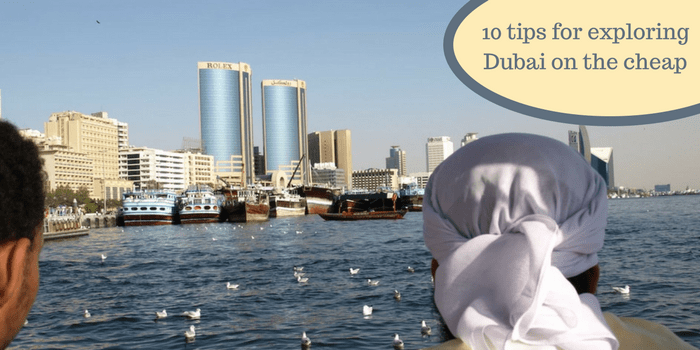
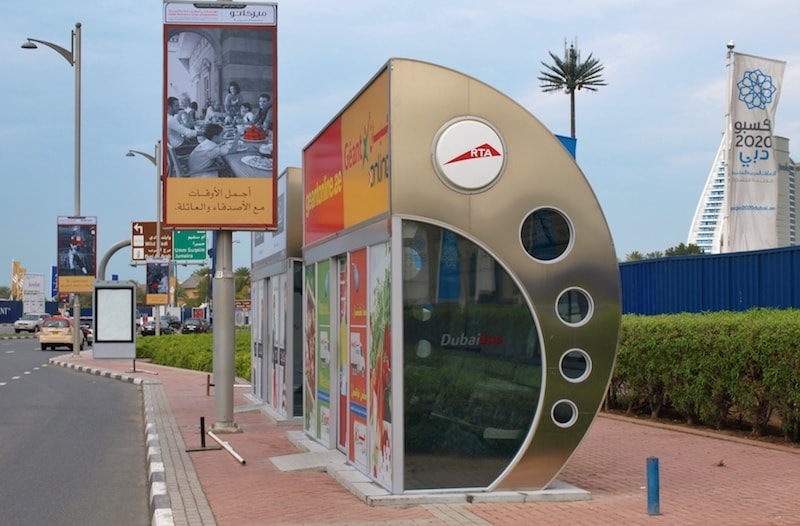
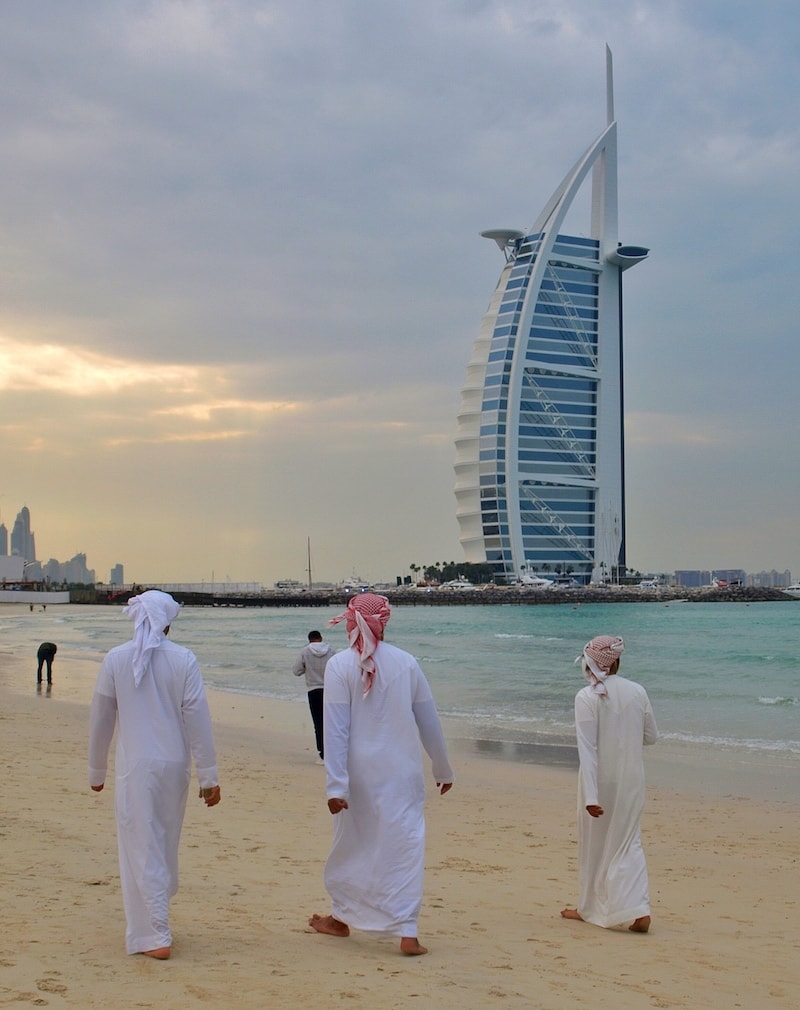
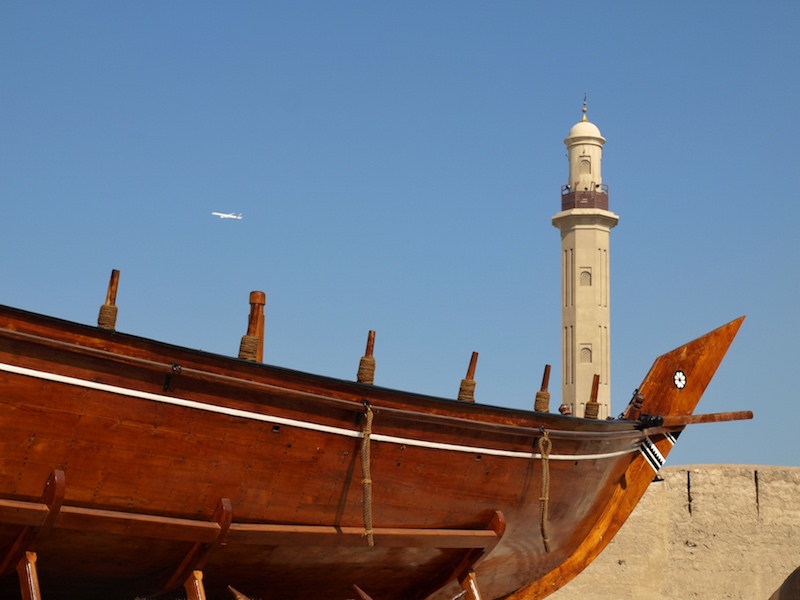
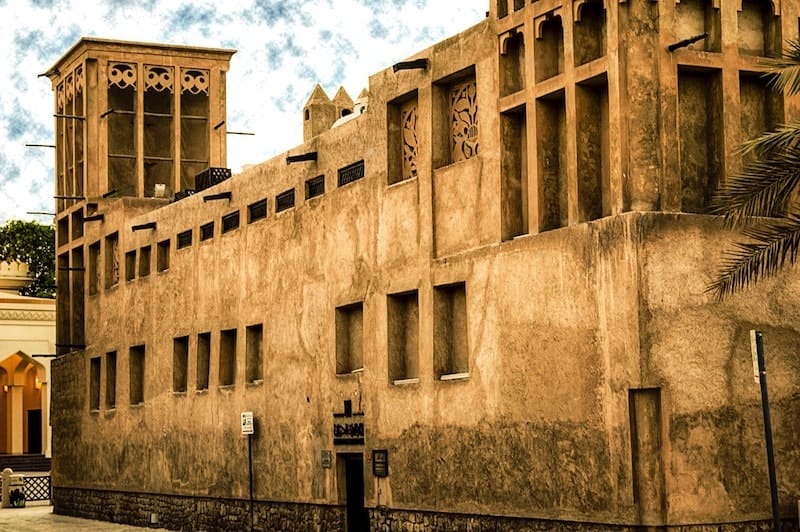



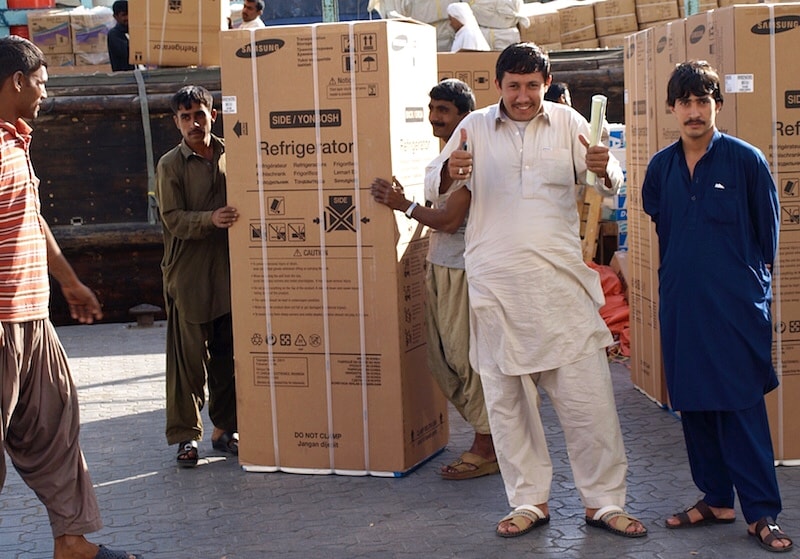
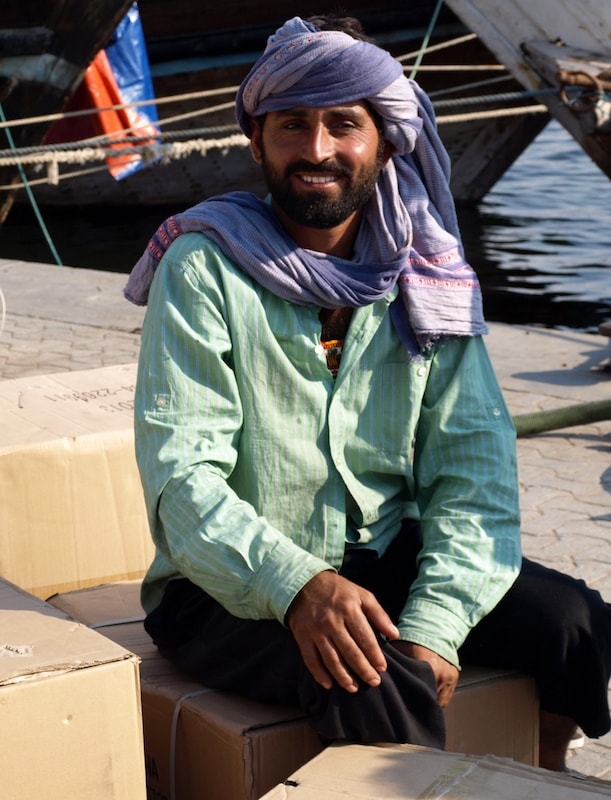
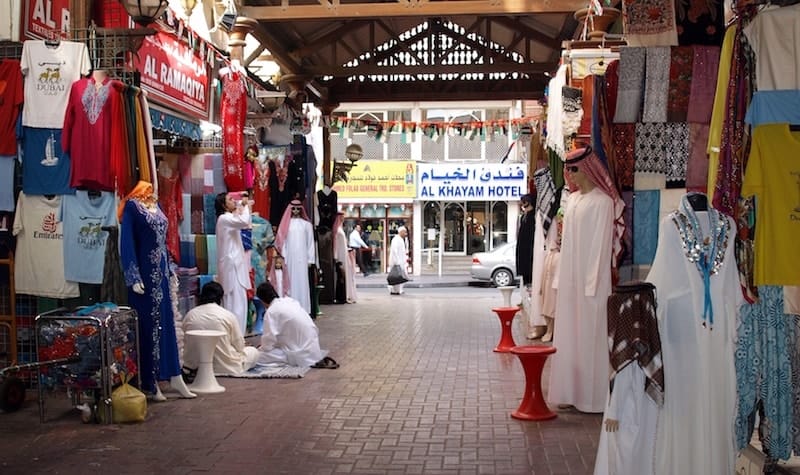
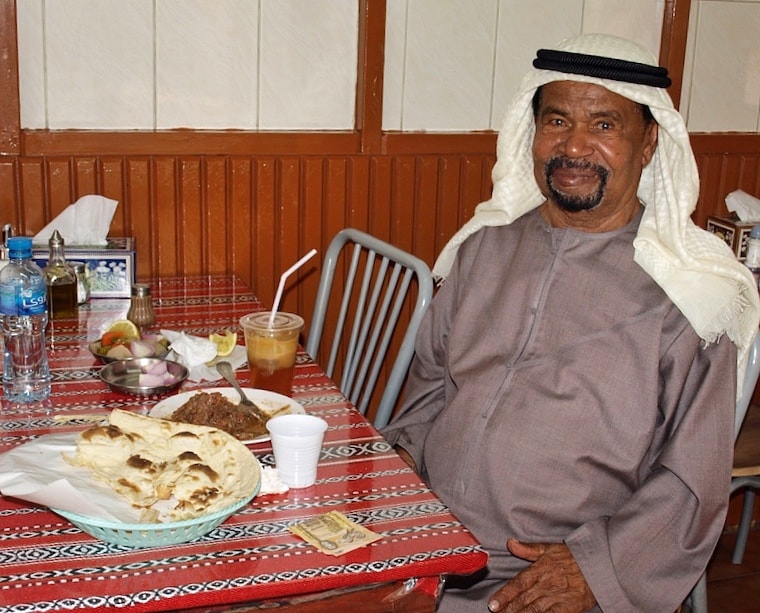
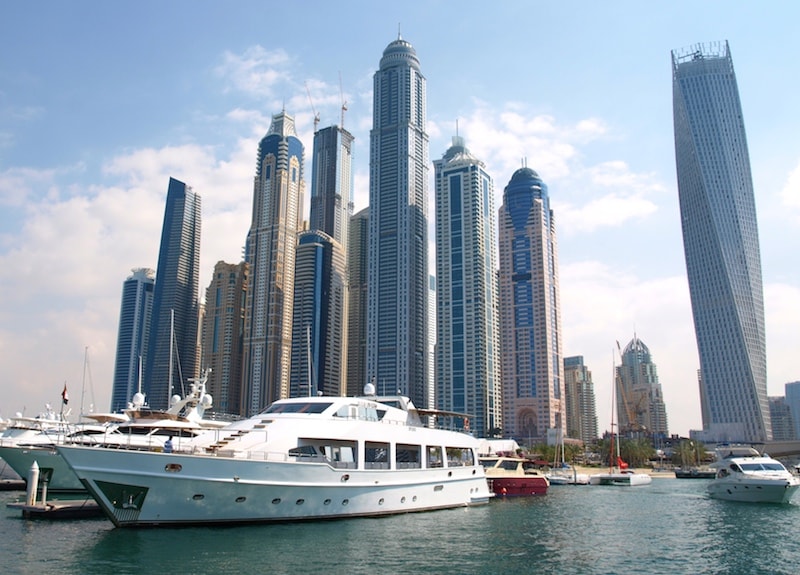
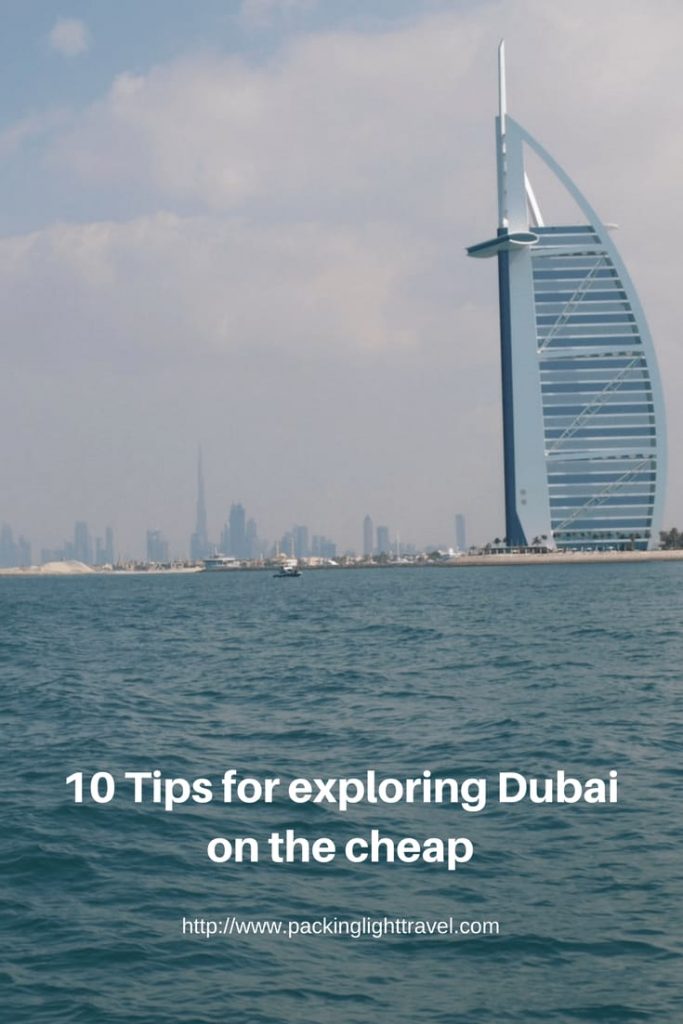




If you come back to the UAE, please add Sharjah into your itinerary!